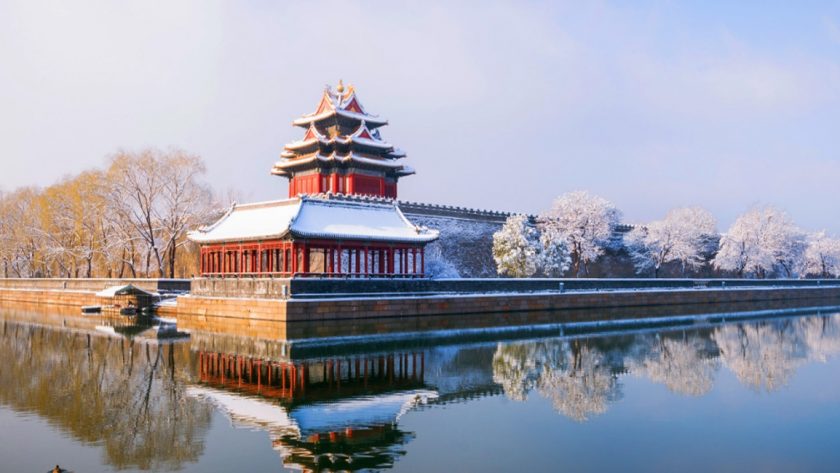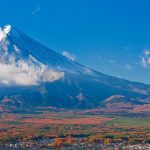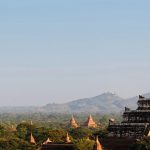Beijing is a city like no other, where history runs on a logarithmic scale; a thousand years ago feels like yesterday, yet the pace of change is so fast yesterday recedes in time like a previous dynasty. The city seems weighted to a standstill sometimes, with grand Communist architecture, and palaces frozen in past centuries, but the rush of millions of bicycles that flow around monuments like water in a stream past boulders keep the city alive. Beijing’s streets and history are alive, and most importantly, relevant.
Walk the hutong alleys of Beijing to discover the dichotomy of time that exists in these traditional back streets. Eat steaming baozi served in bamboo baskets stacked high at vendor’s stalls, while children in Chicago Bulls T-shirts scramble about with a soccer ball. Though the brightest college students work towards an MBA now instead of the old Confucian Imperial exams, they still quote Li Bai and other ancient poets. I have heard my Chinese friend weave his poetry into their conversation, turn Tang rhythms into puns, twist chengyu proverbs and laughter into a language of the present that uses the prose of the past.
The word on the street, of course, is modern. Ever since the turn of the century with the cries of revolution, it’s been the word. From Mao’s proclamation of a New China in Tiananmen Square nearly fifty years ago, to the destruction of the “Four Olds” during the Cultural Revolution, Deng XiaoPing’s “Four Modernizations,” and punk clubs in Sanlitun district, Beijing’s been rushing headlong towards change. And China has changed, though not in predictable ways.
Every bookstore I entered had a copy of George Sorros’ and Warren Buffet’s biographies on prominent display. The nouveau riche of Beijing drives Mercedes. They carry their cell phones conspicuously, wear beepers to their weddings, and dream of Hong Kong, Vancouver and Los Angeles. It is a common argument among them which city in China is the most modern: Beijing, Shanghai or Shenzhen. No one ever bothers to define modern, though.
Off Gulou Street are the Drum Clock Towers, a pair of massive stone and red-wood-roofed archways that originally kept the pace of time for Beijingers, before everyone sported fake Rolexes. Mr. Xue, a curio seller hawking his wares in the shade of the arches, called down the row of stalls for someone to bring me tea as I walked in off the street and collapsed into a chair. Someone handed me a white porcelain bowl with blue design, filled with pale-green tea. Drinking tea is the most timeless and ritualized of customs, other than composing poetry while drinking Chinese wine. I did not feel poetic, merely tired from exploring the city, and a bit frustrated at the traffic congestion, the pollution and the heat. In the cool shadows though, I felt transported, completely surrounded by ancient China (or at least decent replicas from factories in Shenzhen): scroll paintings on silk, opium pipes, golden statues of fat, laughing Buddhas, posters for cosmetics form the ’20s. The old men and young women pulled up stools or squatted around me and began the usual, friendly barrage of questions. Mr. Xue pulled me to the side later, and offered in conspiratorial tones an earthenware object that mostly resembled a shard of a red ceramic planting pot, whispering “very old, hen lao de, Shang dynasty.” I know enough of my dynasties to doubt his claim of a 3,500 year old relic, and laughed him off gently.
I climbed to the top of the tower and looked around. It was one of the first clear-blue days, signaling the start of Beijing’s crisp, beautiful fall weather. From above the city, I could see the Second Ring Road, where the low, cluttered tile hutong roofs and green trees disappear and the Lego block high rises stand like a peripheral army of white fortresses. Construction of new buildings in Beijing proceeds at an unbelievable rate – the Chinese joke is that the crane is the new national bird. At the base of the Drum tower the maze of the Jiao Dou Kou hutongs thrust their peaked, angular roofs up and swarms of people, like ants from up above, scurried and cycled the narrow lanes. I pulled out my 40’s era Chinese bellows camera and took a black and white photo. Later, I would compare it to historical photos in textbooks; only the tell-tale square blocks and construction cranes on the horizon signified the change.
How does the immediacy of history exist in Beijing, where one can see the city’s past in the streets every day? Tai Chi masters in the Temple of Heaven park, at dawn slowly moving, as if their limbs were in a breeze, just as they had for centuries in parks all over China, contrasted with the evening scene outside the People’s Worker’s Stadium where old and young all danced together in an orderly, if jolted, lesson in how to groove to rock-and-roll tunes. . Ancient Emperors used to fly gilded, golden dragon kits in the wide-open spaces of the Forbidden City (now crammed with tourists). Today, Chinese fly kites in Tiananmen Square, under the glazed eyes of Mao’s portrait, and small-time capitalists hawk everything from postcards to Groucho Marx masks. Every sunrise and sunset a crowd of several hundred Chinese gather to watch the raising and lowering of the national flag. Chinese tourists from remote provinces pose for photos in front of Mao’s portrait, just as Americans smile for snapshots in front of Mount Rushmore. I asked Liang Jian, a high school student from Liaoniang province who was visiting Beijing for the first time, whether he though Mao would like China today, the capitalism with Chinese characteristics, and the McDonald’s scattered throughout the city. He laughed, and said probably, because Mao always wanted a strong, modern China. Though maybe not a Big Mac.
In Da Shi Lin street, west of Qianmen subway stop, is a pharmacy store that has been selling herbs and snake-cured liquors for over five hundreds years. During the day, shops selling blue jeans and sunglasses crowd the narrow alley. Not far from the medicine shop, a small open room has traditional cloth shoes with woven hemp soles on display. Walk in and they show you the way the shoes have been made, by hand, since the days the Great Wall was built. At night, migrant workers who have moved to Beijing from far-flung reaches of the country cycle in; on the back of each bike is a makeshift table that folds out and indigenously holds a coal- fired stove somewhere near the back tire. Almost any traditional snack of China is served: Sichuan liang fen (spicy cold noodles), Yunnan (guo qiao meixian) (“across the bridge noodles”), diced squid from the North, Muslim lotus bean soup and lamb kabobs, grilled red scorpions on a skewer (pincers, stinger and all.)
Where I live in the States, history is defined in syndicated reruns. Maybe America’s fundamental lack of relevant history is what draws me to Beijing. Other cities, naturally, offer history-as-present too: Berlin wears modern history like a scar, Bangkok’s klongs are still arteries for that ancient capital, yet Beijing somehow combines the ancient past, the near past, and the present into a city that seems as if it should collapse under its own contradictions in time, but instead revels in them. Chinese MTV and Kentucky Fried Chicken are just another brick in a city’s history as long as the Great Wall.
Perhaps the Great Wall itself is the clearest testament to Beijing, and China’s, sense of time. It is said that China does not worry about waiting decades for events; the country thinks in terms of centuries, as it has for thousands of years. The Great Wall winds across northern China for almost 5,000 miles. Just three hours from Beijing is the Great Wall at Simatai. In 1996 a friend and I climbed at the desolate, beautiful site, with the stone parapets snaking along the dragon’s back mountain ridge and crumbling stones from the Ming Dynasty stretching as far as we could see. I returned this year to feel that sense of perspective again. As I haggled with the bus driver for my fare, I saw the first section of the wall peek through low-hanging clouds, and running up alongside the mountain face, a blue and yellow ski lift. A gate and guard blocked the footpath I knew. Two dozen restaurants lined the thoroughfare, along with “I Climbed the Great Wall” t-shirts on display, Nevertheless, my friend and I bought our tickets, and began making our way up the mountain, immediately turning west, away from the crowds and the monstrous ski lift, and towards the setting sun. In half an hour, we were alone, except for two local peasants who lived in the countryside, near the 14th tower, who walked with us.
One of them, Zheng, walked next to me, and told me of his two children, both of whom are going to school-and how he will try to send the oldest boy into Beijing for further education. He did not complain about walking the distance between forty towers daily, up the steep slopes and scrabbling down the eroded sections of the wall. That night, he brought egg fried rice, and cooked potatoes and eggplant; we sat in a watchtower by a fire that left a blackened scar on the stone wall. He smoked his long pipe, tapping the tobacco out into the ashes of the fire. Looking out over the mountainous landscape shrouded in black, the stars and our fire provided the only light. A few yellow specks nestled in a valley might have been Zheng’s village. All was silent, save for the crackling of the fire, and Zheng slightly humming a folk tune; time stopped.
In the morning, white fog lay like secrets in blue green valleys, and the cresting sunrise warmed the battered stones of the Wall, just as it has for centuries. We gathered our packs and walked onward, treading on history.



